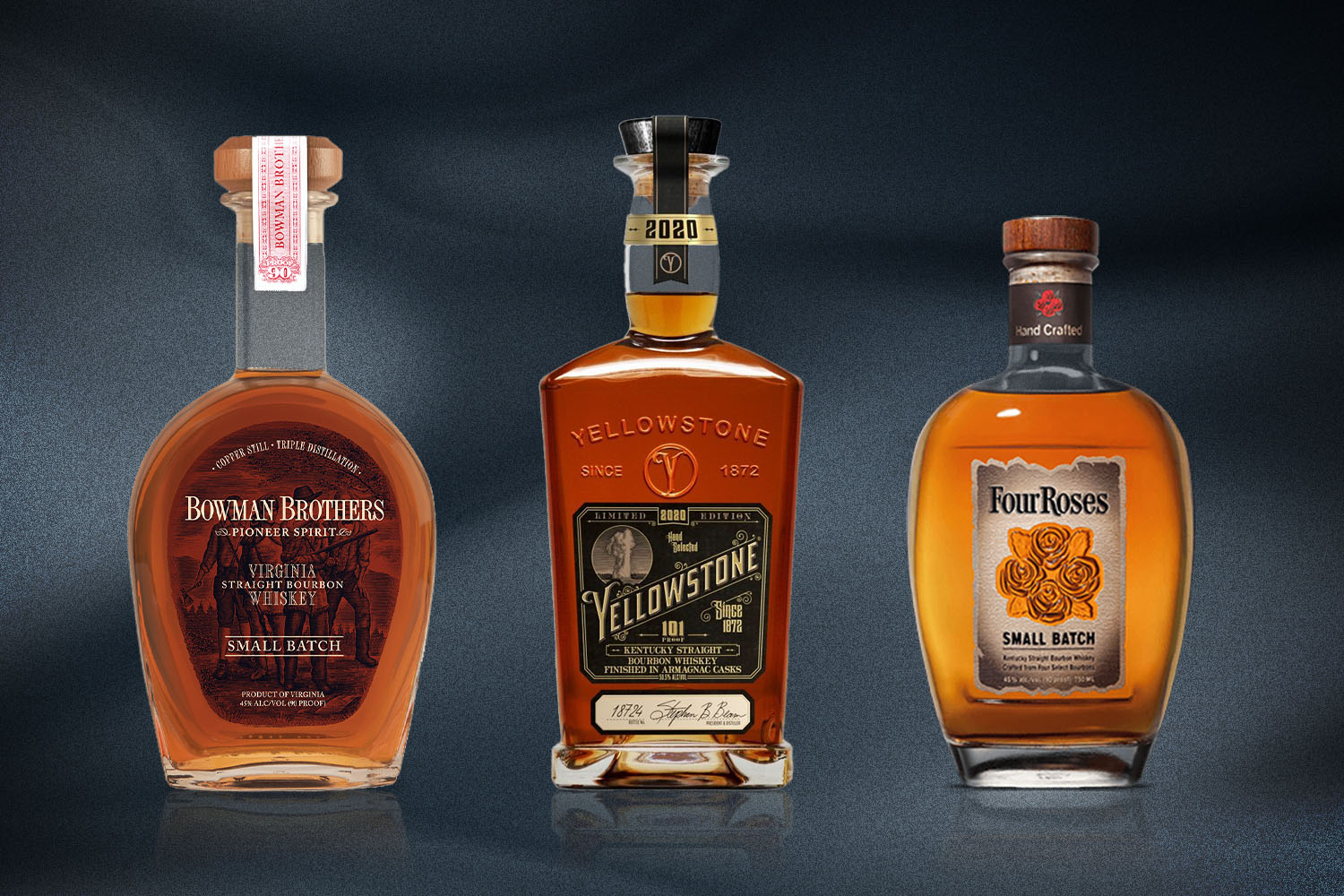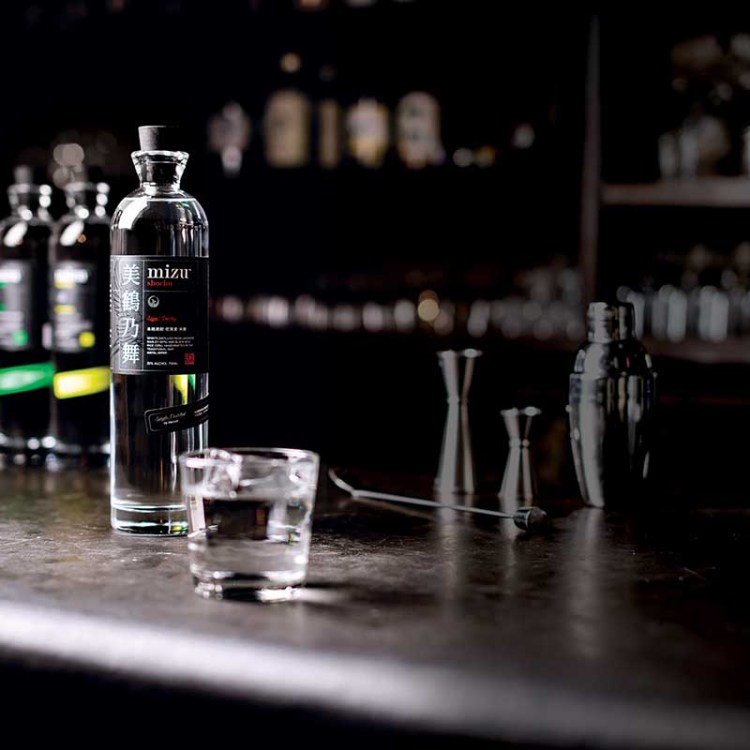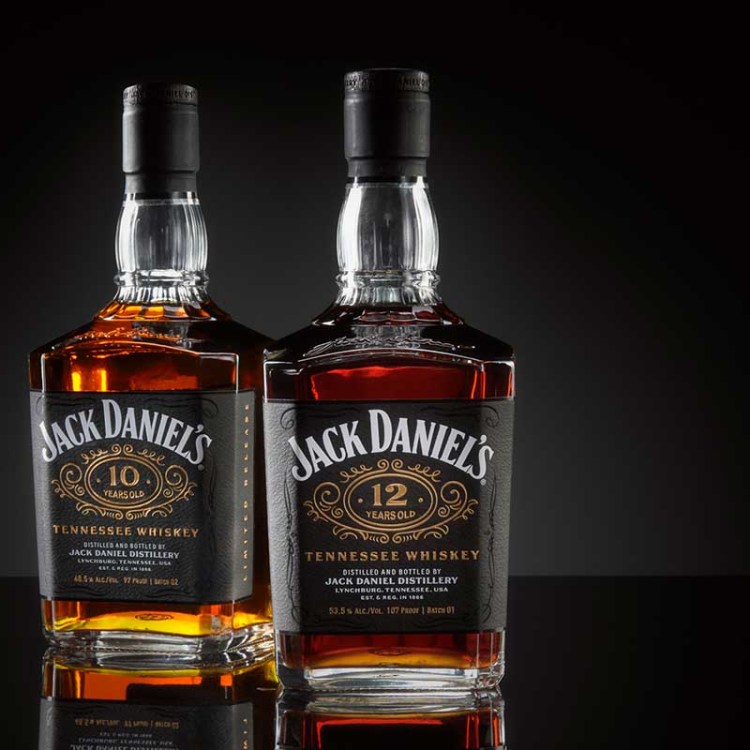“Without question, this is going to open on September 5th.”
When Fawn Weaver made that declaration, it was September 4th. The CEO and co-founder of Uncle Nearest Premium Whiskey was discussing the opening of a 270-acre distillery in Shelbyville, TN, the site of a former Tennessee Walking Horse farm.
At the time of her statement, Weaver was also wearing a hard hat, conducting a pre-opening tour with a few members of the press and checking in with the 100+ workers (via a two-way radio feed) who were trying to get phase one of a working whiskey distillery open for a public party, to which thousands of nearby residents had RSVP-ed.
“If we were normal and sane, we’d open this in 2021,” said Weaver, playfully waving off a photo (hardhats and hair don’t go together, she added). “Time is of the essence. I look at life as a daily sprint, not a marathon. I don’t assume I’m going to make it a full 26.2 miles. I just hope to make it to the next point.”
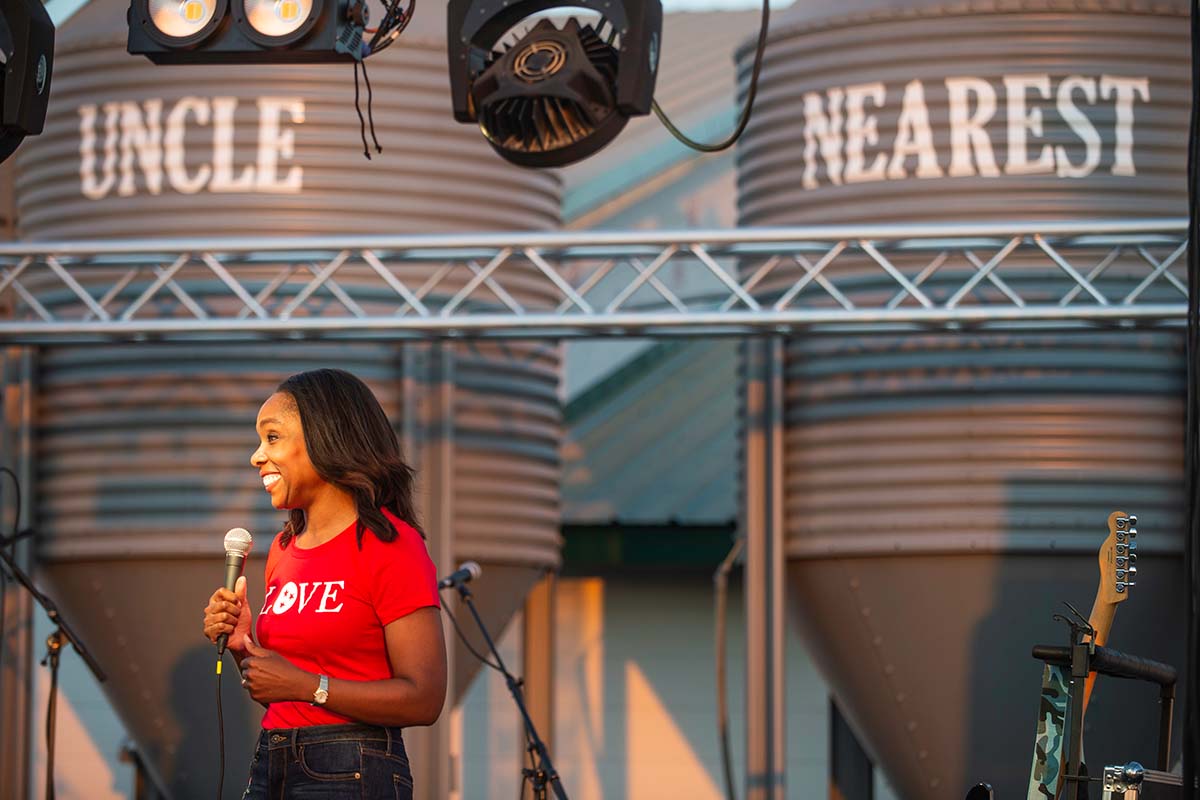
Those daily sprints seem to be working. Phase one (of four) of the distillery launched the following day, and the party was a success. It was a fitting “official” debut for Uncle Nearest, which is already America’s fastest growing independent whiskey brand, now distributed in all 50 states and 10 countries.
That’s an impressive feat for a company that didn’t even exist three years prior in any industry. And if you know the whiskey world, you know that spirits usually take time. So if Uncle Nearest’s rise seems rather sudden and against the grain, it’s because Weaver isn’t quite correct in calling this a sprint.
Rather, the origin of Uncle Nearest is a hidden and long overdue story that’s more than 150 years old. It touches on race and the true origins of whiskey in America, and it involves a healthy dose of investigative journalism.
The story that begins with one man: Nathan “Nearest” Green, a 19th-century slave and perhaps the most important character in the history of American whiskey.
* * *
Three years ago, Clay Risen wrote a story the New York Times. His feature, “Jack Daniel’s Embraces a Hidden Ingredient: Help From a Slave,” came out the same year that the venerable Tennessee whiskey brand was celebrating its 150th year.
It’s a startling read: the creator of one of the world’s most famous whiskies had actually learned his trade from a slave — Nearest Green. While that fact wasn’t actually a secret (it was documented in Ben A. Green’s 1967 somewhat forgotten biography Jack Daniel’s Legacy), the brand hadn’t exactly gone out of its way to honor Green’s legacy.
“Slavery and whiskey, far from being two separate strands of Southern history, were inextricably entwined,” Risen wrote. “Enslaved men not only made up the bulk of the distilling labor force, but they often played crucial skilled roles in the whiskey-making process. In the same way that white cookbook authors often appropriated recipes from their black cooks, white distillery owners took credit for the whiskey.”
Fawn Weaver, a historian, real estate investor and best-selling author (Happy Wives Club), took note. “I read it, and I had a passion for it I didn’t understand,” she says. She flew down to Lynchburg and began to do research, combing through old paperwork and putting ads in local papers soliciting historical documents. She also met with Nearest’s descendants … who were, admittedly, wary.
“I told everyone: I’m not here to harm your family’s legacy,” Weaver remembers. While she initially thought her research would lead to a book or a movie, it was actually one of Green’s family members who suggested honoring their great-great-grandfather with a bottle.
“Fawn didn’t want to start a distillery until she met most of the family,” says Victoria Eady-Butler, a great-great-granddaughter to Nearest Green, former Department of Justice officer and current Director of Administration for Uncle Nearest. “We’re forever grateful for her. It’s our family’s name and legacy she’s brought out. And it was important that she reached out and brought the family into the process.”
Eady-Butler is also the first descendant to be personally involved in the whiskey-making process at Uncle Nearest — two releases of the brand’s 1884 blend were curated (in part) by her.

Weaver’s involvement goes beyond just the bottle. She helped start the Nearest Green Foundation, which revitalized the Highview Cemetery in Lynchburg, where Nearest and many of his family members were laid to rest. Along with her husband, she also purchased the Dan Call Farm, the property where Nearest worked as a head stiller (aka master distiller) and Jack Daniels worked as a chore boy. (A house on the property adorned with every bottle of Uncle Nearest whiskey will be used for tours, though it is not actually part of the new distillery.)

Weaver also helped her nascent whiskey brand raise two rounds of $30 million investments each, all from individuals and none from companies, private equity or venture capital. “I must know who you are and how you’re going to help build this brand,” Weaver says with a laugh. “And no spirits companies! We’re independent. I love having no people with a spirits background investing in us.”
* * *
At this point, it’s fair to point out that Nearest was not Jack’s slave, an idea that gained some prominence after Risen’s article. “Jack and Nearest were buddies,” as Eady-Butler notes. “And growing up, my family also had a special bond with the Daniels and the Motlows (the former owners of Jack Daniel’s).”
It’s also fair to ask what Weaver and Nearest’s descendants think of Jack Daniel’s, the brand. It’s a surprisingly copacetic relationship.
“As far as relationships go, it’s always been good,” says Eady-Butler. “That company’s never made whiskey without a Green family member on their property. And now there’s a tribute wall to Nearest’s family on their walls. I think of it that Jack Daniel’s never kept a secret — it just wasn’t broadcast like what we’re doing now. They didn’t know how to tell his story.”
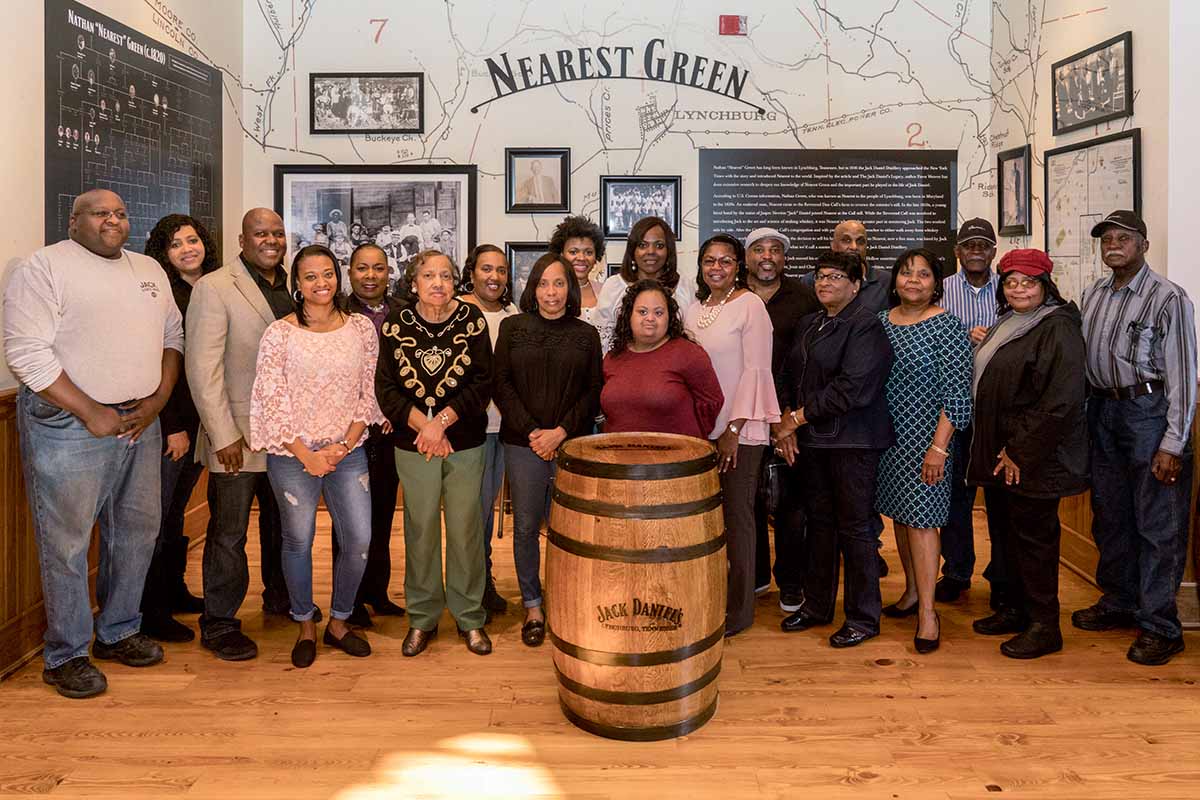
Besides acknowledging Nearest’s role in their brand’s history, Jack Daniel’s took out several ads before the Uncle Nearest distillery launch and released this statement: “From the standpoint of history, we’re happy to see the name of Nathan ‘Nearest’ Green amplified and his story told. It’s part of our shared origin and an important story of a unique relationship between Jack Daniel and his teacher and fellow whiskey-maker Nearest. A story we can all learn from. Fawn Weaver has really helped deepen our understanding of this story and we’re very appreciative of her willingness to share what she’s learned. Jack and Nearest were friends back when they were alive and that spirit lives on today. It’s a bigger story than whiskey and we’re proud to help tell it.”
* * *
It’s a fascinating story, but it does no good if the whiskey doesn’t cut it. Thankfully, all three expressions of Uncle Nearest pack some heat (the core 1856 release is 100 proof) while maintaining the smoothness that’s characteristic of Tennessee whiskey. That owes to the fact that the liquid goes through a specific mellowing process developed for the brand.
It’s a winner, and we mean that literally: Uncle Nearest has garnered more than 50 awards, including “World’s Best” at the Whisky Magazine’s 2019 World Whiskies Awards.

Obviously, the first releases from the brand (1820, 1856 and 1884 — dates marking Nearest’s birth, the year Jack came to Nearest’s farm and the year Nearest retired) are sourced from other Tennessee distillers, although that does not include Jack Daniel’s. “You can’t start in June 2016 and have a whiskey product ready now,” as Eady-Butler notes. As the new property finishes phase two in April 2020, the actual distillery, rickhouses and grain house will come into play, and Uncle Nearest will begin the process of creating and distilling its own spirit from scratch.
If you’re wondering what the hurry is for honoring the legacy of a man born in 1820, Weaver has a rather synergetic answer for you, all tying into September 5th. It turns out that day is the birthday of Mammie Green, a granddaughter of Nearest and the family member who often retold the story of Nearest’s legacy. It’s also the birthday of Ben Green, the author of Jack’s biography. It’s also the birthday of Clay Risen, the New York Times reporter behind the original Nearest Green feature. And it’s Weaver’s birthday.
“My belief is that for whatever reason, I was chosen to do this,” says Weaver. “I’m not doing for money, I’m not going to flip this, and I want to keep this story in good hands. So I don’t think I’m the last person on September 5th to carry on with this story … and I want to make sure Nearest’s legacy lives on and it’s not dependent on any of us. And then whoever comes next can build on this.”
That said, Weaver also hopes to leave a bit of her own legacy. “Our industry is lacking women and color,” she says. “But they haven’t wanted to come into the business. Now, hopefully they will, because of Uncle Nearest.”
This article was featured in the InsideHook newsletter. Sign up now.


